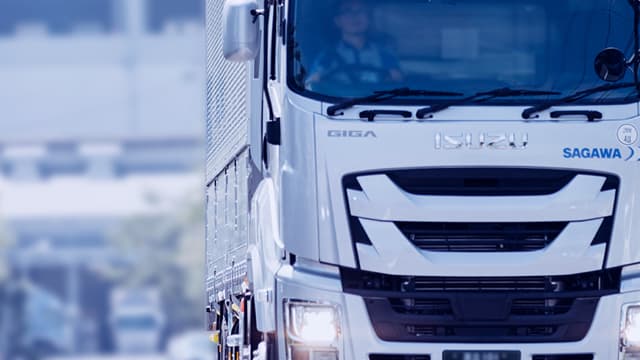Environmental Accounting
Environmental Conservation Cost
(Units: million yen)
| Category | Major initiatives | FY2018 | FY2019 | FY2020 | FY2021 | FY2022 | ||||||
|---|---|---|---|---|---|---|---|---|---|---|---|---|
| Environment | Environment | Environment | Environment | Environment | ||||||||
| Investments | Expenses | Investments | Expenses | Investments | Expenses | Investments | Expenses | Investments | Expenses | |||
| (1) Costs within business area | 241 | 1,456 | 273 | 1,399 | 301 | 1,431 | 238 | 1,443 | 234 | 1,345 | ||
| Breakdown | 1. Cost of pollution prevention | Prevention of air pollution, water contamination and noise (sound insulating wall, car-washing equipment, etc.) | 7 | 3 | 13 | 4 | 1 | 6 | 4 | 6 | 2 | 6 |
| 2. Global environmental conservation cost | Prevention of global warming and destruction of the ozone layer (environmentally friendly vehicles, solar power generation systems and power-saving equipment, etc) | 227 | 245 | 258 | 259 | 295 | 289 | 226 | 323 | 230 | 326 | |
| 3. Cost of circulation of resources | Waste processing, water saving, purchase of uniforms recycling PET bottles and recycling of tires, etc. | 7 | 1,208 | 2 | 1,136 | 4 | 1,136 | 8 | 1,114 | 2 | 1,013 | |
| (2) Upstream and downstream cost | Promoting green purchasing | - | - | - | - | - | - | - | 354 | - | 357 | |
| (3) Cost of management activities | Introduction of environmental managementsystems, environmental advertising,environmental education and disclosure of environmental information | - | 4 | - | 5 | - | 5 | - | 8 | - | 9 | |
| (4) Research and development cost | Development of environmentally friendly services | - | - | - | 0 | - | 0 | - | 0 | - | 17 | |
| (5) Cost of social activities | Donation to domestic and foreign environmental conservation groups, raising awareness, Clean-up Campaign | - | 1 | - | 1 | - | 0 | - | 11 | - | 10 | |
| (6) Cost of responding to environmental damage | Measures for dealing with asbestos dust | - | - | - | - | - | - | - | - | - | - | |
| (7) Cost of safety measures | Vehicle inspection, employee education and raising awareness as safety measures | - | 4,757 | - | 4,764 | - | 4,842 | - | 5,093 | - | 5,586 | |
| Total | 241 | 6,218 | 273 | 6,169 | 301 | 6,278 | 238 | 6,910 | 234 | 7,324 | ||
*The tally is for Sagawa Express.
*Partially revised FY2020 data from previously published data.
*Aggregate upstream and downstream cost promotiong green purchasing from FY2021.
Environmental Performance and Environmental Conservation Effect
| Environmental performance indicators | Unit | FY2021 | FY2022 | Environmental conservation effect(FY2021 Results - FY2022 Results) | |
|---|---|---|---|---|---|
| Diesel | kl | 81,748 | 82,909 | -1,161 | |
| Kerosene | kl | 96 | 90 | 6 | |
| Heavy oil | kl | 97 | 96 | 1 | |
| Natural gas *1 | km3 | 7,395 | 6,122 | 1,273 | |
| City gas *2 | km3 | 898 | 829 | 69 | |
| LNG | kg | 7,960 | 0 | 7,960 | |
| Propane *3 | kg | 121,954 | 108,440 | 13,514 | |
| Gasoline *4 | kl | 16,354 | 15,412 | 941 | |
| Electricity (fossil fuel) | ten thousand kWh | 19,785 | 16,143 | 3,641 | |
| Renewable energy *5 | Private solar power generation | ten thousand kWh | 45 | 42 | 42 |
| Purchased | ten thousand kWh | 2,268 | 6,254 | 6,254 | |
| Water (water intake) | km3 | 729 | 857 | -128 | |
| Water (waste water) | km3 | 725 | 855 | -131 | |
| Industrial water (water intake) | km3 | 0 | 0 | 0 | |
| Industrial water (waste water) | km3 | 0 | 0 | 0 | |
| Number of recycled PET bottles *5,6 | Bottles | 1,089,509 | 581,944 | 581,944 | |
* The tally is for Sagawa Express. The environmental conservation effect is calculated as the net change compared to FY2021.
*1Figures for natural gas used at onsite gas stations are after temperature or pressure corrections.
*2Figures for city gas were tallied using the figures written on invoices from suppliers without making temperature or pressure corrections. Biogas excluded.
*3The figures written on invoices from suppliers (m³) were converted into weight at 2.07kg/m³.
*4 Including high octane.
*5The environmental conservation effect of renewable energy and amount of PET bottle recycle are recorded as environmental conservation benefits based on actual results.
*6The effect believed to have contributed to the recycling of PET bottles by using uniforms made from recycled PET bottles is converted into the number of PET bottles. (Value for conversion: Total weight approx. 175g for short sleeves and approx. 240g for long sleeves) x number of uniforms x amount of polyester used (cotton material 65% / sweat absorption material 100%) x1 (100% recycling rate of polyester used) ÷ 30 (30g per 500 ml PET bottle)
Tallying method
- Guideline used as a reference: Environmental Accounting Guidelines 2005 Edition, Ministry of the Environment
- Acquisitions of assets valued at 200,000 yen or more are recorded as investments.
- Environmental facilities are depreciated over four years by the straight-line method.
- Personnel expenses are calculated based on the number of hours of environmental activities x the average personnel expenses of Sagawa Express.





